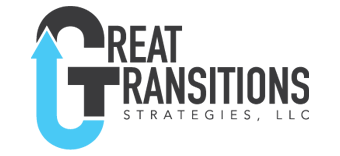“I went on vacation for two weeks and was called almost every day. I had to stay current with my email to keep things on track and when I got back, I was still buried. It took two days to catch up. My greatest frustration: my group did not make any decisions other than the routine. They held all the challenging issues for me after I got back.”
Does this sound familiar?
How your organization runs when you are not there is ultimate measurement of your leadership. On a scale of 1-10 score yourself ________.
If it takes you being there to get the desired results, keep things on track, maintain key client and stakeholder relationships, are you really leading your organization? Let’s do a quick analysis.
First, you may need to solidify your definition of leadership. Most definitions have the elements of setting the vision and creating the conditions to inspire and empower others within the organization to achieve a shared goal.
What is your definition of leadership?
_______________________________________________________________________________
_______________________________________________________________________________
Now that you have your leadership definition, let’s determine the causal factors of your score. Typically, leaders who require centralized control and a hierarchy for decision making score lower. That may work fine and be a requirement for certain organizations. However, as leaders many times we hold onto more than we need to. You are ultimately accountable, everyone gets that. Does that directly translate into you being unable to leave the organization for a period of time?
Most people have an impression of the military and large corporations as top down decision-making organizations. General Stanley McChrystal in his book Team of Teams describes how he led using the concept of shared consciousness: trust built between team members and other teams based on the understanding of their shared purpose.
He regularly had to be the final decision maker on rapid response operations. That meant waking him up in the middle of the night and briefing him on details, so he could give the go-ahead for the mission. After all he was accountable, just as you are, for everything that happened in his organization.
His conclusions were that he was not adding value to the decision and was actually slowing the process and at times creating more risk. As the key person of the organization he became a limiting factor. In business terms he was adding costs to the operation.
He decentralized his organization’s decision making by creating an environment of transparency, that ensured an understanding of his intent, and the shared purpose. It took significant time and effort to educate, train, and inculcate the practice into his organizational culture.
The result: an organization that could respond quickly and decisively, making the experts on scene the decision-makers. That’s a military example, what about business. There are numerous examples, one of the most notable is what Lou Gerstner Jr. accomplished in his turnaround of IBM. He focused his intent on improving operations through a culture change. He was steadfast in pushing his culture of “customer first”, empowered his executives, and saved the company. If the largest of organizations can succeed what about your business/organization/team?
Leaders create other leaders and opportunities for them to lead. How are you developing those that work for you? How well does your team know and operate on your intent? How well do you know your intent? Make it better today.
Set the vision and create the conditions that inspire and empower your leadership team to achieve your shared goals. Then develop your leadership team through education and training to execute your intent until it becomes part of your culture. It will make your organization run as if you are there when you are not.






